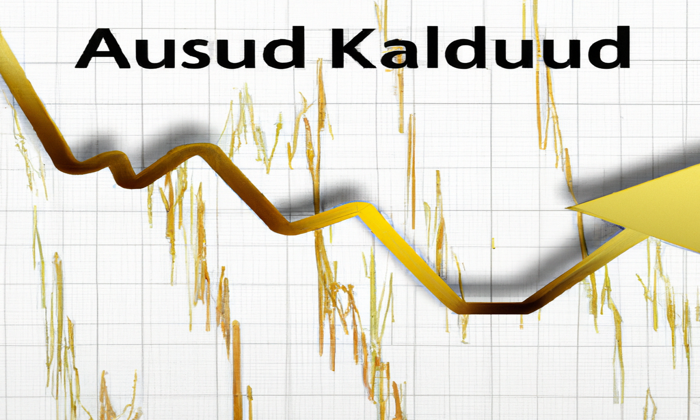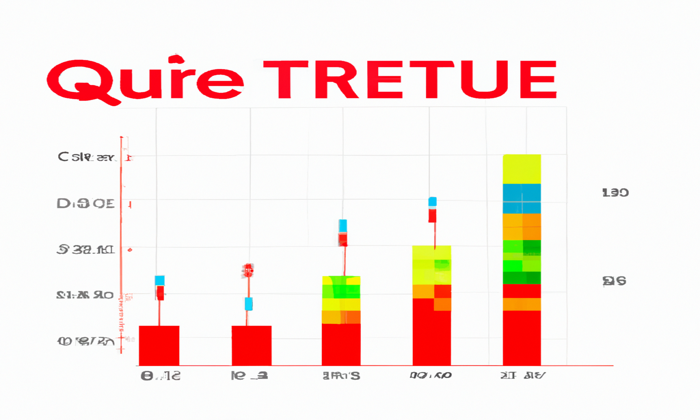Wall Street momentum faced a setback on Tuesday as the tide of investor sentiment shifted, particularly away from tech stocks amidst rising bond yields. The Dow Jones Industrial Average saw a slight decline of 114.83 points, or 0.27%, while the broader S&P 500 recorded a 0.39% drop, marking the end of a six-day winning streak. Investors were unsettled as the Nasdaq Composite fell by 0.38%, pressured by losses in major players like Nvidia and Apple. This turn of events, largely driven by concerns over rising interest rates and their potential impact on equity valuations, indicates a significant shift in market dynamics. As the tech sector struggled, it highlighted the delicate balance investors must navigate in the current financial landscape, especially with yields reaching levels that historically challenge stock market stability.
The recent fluctuations in the equity markets illustrate a pause in the bullish sentiment traditionally seen on Wall Street. With the decline in values for technology shares, uncertainty regarding bond yields has compounded investor apprehension. As prices in the S&P 500 waver, the implications of increasing interest rates on overall market stability come into sharper focus. Financial analysts are cautious, suggesting that the ongoing adjustments in long-term borrowing costs could reshape investor strategies moving forward. This convergence of events creates a complex tapestry of risks and opportunities, shaping the discourse around stock market momentum.
Wall Street Momentum Stalls Amid Rising Bond Yields
On Tuesday, Wall Street’s momentum came to an abrupt halt, primarily driven by a sell-off in tech stocks. The Dow Jones Industrial Average dropped by 114.83 points, or 0.27%, and the S&P 500 saw a decline of 0.39%, ending a promising six-day winning streak. This pullback can be attributed to investors’ growing concerns over surging bond yields, which are putting additional pressure on equities. Particularly, the tech sector, which had previously been a powerhouse of growth, was hit hard, demonstrating the market’s sensitivity to changes in interest rates.
Market analysts suggest that this unexpected retreat suggests a wider reevaluation of equity valuations in the context of rising interest rates. With the yield on 10-year Treasury notes rising to 4.48%, and the 30-year yield nearing 5%, investors are becoming more cautious. As Matthew Miskin from Manulife pointed out, yields above 4.5% could lead to significant challenges for the future of equity valuations, prompting investors to reassess their positions in growth-centric sectors such as technology.
Impact of Rising Interest Rates on Tech Stocks
The recent increase in bond yields has triggered a wave of caution among investors, particularly toward high-flying tech stocks. The S&P 500 sector representing technology reported a significant decline, dropping about 0.9%. Major players like Nvidia, AMD, Meta, Apple, and Microsoft faced significant losses, reflecting a broader trend where rising interest rates negatively impact equity valuations. Investors are increasingly aware that higher borrowing costs can stifle growth, especially for tech firms that rely heavily on favorable financing to fund innovation and expansion.
This shift in sentiment comes after a bullish rally that saw the S&P 500 bounce back over 20% from its April lows. However, the concerns surrounding equity valuations in an environment of rising interest rates emphasize the need for careful analysis. As noted, rates at or above 4.5% often correlate with stronger selling pressures in the market. The juxtaposition of a recovering tech sector against a backdrop of increasing yields suggests that investors may have to adjust their strategies moving forward.
Understanding the S&P 500’s Decline
The S&P 500’s recent decline can be traced back to a combination of rising interest rates and investor sentiment shifts. After a robust five-week rally that increased the index significantly, a pullback was inevitable. Reports indicate that the index is now approximately 3% below its all-time high, highlighting the fragility of the market. As investors reassess their strategies amid these changing conditions, caution appears to be the dominant sentiment, as articulated by U.S. Bank Wealth Management’s Bill Northey, who stated that the optimism was not grounded in clarity.
Amidst this backdrop, the bond market’s fluctuations add another layer of complexity. With the yield on 30-year bonds exceeding 5%, investors are wary of how persistent high yields will affect growth on equities, especially as the market processes Federal financial policies and potential tax legislation. As the economic landscape evolves, understanding the developments surrounding the S&P 500 becomes crucial for navigating these turbulent waters.
Equity Valuations Under Pressure
Equity valuations are facing increasing pressure as bond yields rise. Analysts have pointed out that historically, when the yield on the 10-year Treasury note exceeds 4.5%, stock valuations tend to suffer. The recent changes in the bond market have led many investors to reevaluate their positions, especially in sectors known for volatility like technology. This reaction reflects concerns that lofty equity valuations may no longer be sustainable in an environment characterized by rising interest rates.
Furthermore, the interplay between rising bond yields and investor optimizations will likely dictate future trading strategies. Analysts have warned that excessive yields could deter capital from flowing into equities, particularly if fixed income instruments begin to offer more attractive returns. Given the recent downgrade of U.S. debt by Moody’s, investors’ fears could further solidify, leading to a more conservative approach in the equity markets.
Tech Sector Performance Analysis
The tech sector has recently showcased its volatility, influenced heavily by macroeconomic factors like rising bond yields. With major companies such as Nvidia and Apple seeing significant dips, investors are cautious about the sustainability of tech stocks, especially after a period of robust gains. This performance analysis demonstrates how sensitive the tech sector is to interest rate changes, as firms that thrive on low borrowing costs may now face headwinds in profitability.
As tech firms weigh their growth prospects against a backdrop of increased costs due to higher interest rates, the market is entering a phase of reevaluation. The sector’s advancements have made it a driver of economic growth, but as rising yields challenge valuations, the outlook may dictate a more prudent investment approach. Investors must now consider not just the innovations tech companies are delivering, but also the broader economic impacts these interest rate adjustments are having on their operational costs.
Evaluating Market Sentiment Post-Decline
In the aftermath of Wall Street’s recent downturn, evaluating market sentiment becomes crucial for investors. The sudden shift from optimism to caution highlights the market’s sensitivity to bond yields and uncertain economic signals. As tech stocks have faced significant sell-offs, it is essential for market participants to analyze the reasons behind these changes. Are these declines a temporary blip, or do they signal a more profound reevaluation of market fundamentals?
Bill Northey’s observation regarding optimism without clarity highlights the necessity for investors to stay informed and adaptable. Understanding market sentiment is vital, especially in assessing whether the current market environment will allow for a recovery or if these declines are symptomatic of deeper issues. As traders and investors recalibrate their perspectives, sentiment shifts will likely dictate future market trajectories.
Political Influences on Market Dynamics
Political events, such as legislative standoffs, can greatly influence market dynamics and investor behavior. Recently, President Trump’s failure to unite the GOP on a critical tax bill has created uncertainty for equities, particularly as tax reforms often affect corporate profitability projections. The inability to push through such legislation before important deadlines may lead to hesitance among investors, exacerbating any fears stemming from rising interest rates.
Markets thrive on certainty and predictability, and political gridlock can disrupt both. With the S&P 500 and tech stocks faltering amid these uncertainties, it becomes increasingly important for investors to consider how political developments will shape financial landscapes. A clearer picture of tax policies could provide the market with the encouragement needed to rebound and reclaim its prior momentum.
Long-term Outlook for Tech Stocks
Looking towards the long-term, investors are tasked with reevaluating the health of tech stocks in light of rising interest rates and bond yields. While these factors currently pose challenges, the technological innovations and growth potential inherent in this sector continue to attract interest. However, with market conditions shifting, a cautious approach may be warranted as equity valuations recalibrate.
The potential for tech companies to adapt to a changing financial landscape is significant. Companies that can manage costs effectively and continue to drive innovation will be better positioned to survive and thrive even in higher yield environments. As the long-term outlook develops, investors will need to balance immediate risks with the broader potential that tech stocks hold in reshaping markets and economies.
Navigating Investment Strategies in Volatile Markets
In times of volatility, having a robust investment strategy is more crucial than ever. Investors need to understand how rising bond yields impact their portfolios and make informed decisions on asset allocations accordingly. With tech stocks experiencing turbulent movements influenced by market dynamics, diversifying investments or shifting towards more stable sectors may mitigate risks associated with these fluctuations.
Furthermore, assessing investment strategies in relation to macroeconomic indicators, such as interest rates and policy changes, can provide insight into future market behavior. As seen with the recent declines in the S&P 500, a reactive approach that considers both current financial conditions and longer-term growth potential may yield better outcomes for investors navigating these uncertain terrains.
Frequently Asked Questions
What factors caused Wall Street momentum to halt recently?
Wall Street momentum has recently come to a halt due to investors withdrawing from tech stocks and increasing bond yields, which have added pressure on equity valuations. The Dow Jones Industrial Average and S&P 500 saw declines as a result.
How do rising bond yields affect Wall Street momentum?
Rising bond yields have a significant impact on Wall Street momentum as they challenge equity valuations. When the 10-year Treasury yield exceeds 4.5%, it often leads to a pullback in stock prices and investor sentiment on Wall Street.
What was the effect of tech stocks on Wall Street’s recent performance?
Tech stocks played a crucial role in Wall Street’s recent performance, contributing to a decline after leading a strong rally. The tech sector, including major companies like Nvidia and Apple, was the worst performer, causing a pullback in overall market momentum.
What does the S&P 500 decline indicate about Wall Street momentum?
The recent S&P 500 decline signifies a slowdown in Wall Street momentum, especially after a six-day winning streak. This decline, attributed to rising interest rates and weakened tech stocks, suggests that investor confidence is currently shaken.
How do equity valuations relate to Wall Street momentum amid rising interest rates?
Equity valuations are closely tied to Wall Street momentum, particularly as rising interest rates create downward pressure on stock prices. Analysts have noted that yields above 4.5% can degrade equity valuations, leading to market pullbacks.
What is the outlook for Wall Street if bond yields continue to rise?
If bond yields continue to rise, the outlook for Wall Street may remain cautious, with potential for further declines in equity valuations and a halt in market momentum. Investors will likely monitor the yield curve closely for indications of future trends.
What role do tech stocks play in driving Wall Street momentum?
Tech stocks are often a key driver of Wall Street momentum due to their high growth potential. However, when these stocks decline, as they recently have, it can severely impact overall market momentum and investor confidence.
How can investors respond to Wall Street momentum shifts influenced by rising bond yields?
Investors can respond to shifts in Wall Street momentum by diversifying their portfolios, focusing on sectors that may perform better in a high-interest-rate environment, and closely monitoring bond yields to make informed investment decisions.
| Index | Change | Key Points |
|---|---|---|
| Dow Jones Industrial Average | -114.83 points (-0.27%) | Decline caused by tech stock pullback and rising bond yields. |
| S&P 500 | -0.39% | Ended a six-day winning streak, now down about 3% from all-time high. |
| Nasdaq Composite | -0.38% | Losses in chipmakers and major tech firms such as Nvidia and Apple. |
| Bond Yields | 10-Year: 4.48%, 30-Year: >5% | Increased yields following Moody’s downgrade of U.S. debt impacting equity valuations. |
| Tesla | +2% | Elon Musk confirms commitment to remain CEO for at least five more years. |
Summary
Wall Street momentum faced significant challenges on Tuesday as investors began withdrawing from technology stocks amidst rising bond yields, leading to a noticeable decline in major indexes. The retreat of the tech sector, particularly with losses in leading companies such as Nvidia and Apple, further compounded investor uncertainty. Despite the rollercoaster of market activities in recent weeks, analysts suggest that the overarching pressure from high bond yields may pose ongoing challenges for equity valuations. This situation highlights the importance of monitoring both stock performances and bond yield movements as key indicators of market trends.
Wall Street momentum took a significant downturn on Tuesday as investors reevaluated their positions in tech stocks amidst rising bond yields, leading to a challenging environment for equities. The Dow Jones Industrial Average fell by 114.83 points, marking a 0.27% decline, and the S&P 500 followed suit with a 0.39% drop that cut short a promising six-day winning streak. The tech sector struggled notably, with heavyweights like Nvidia, AMD, and Meta dragging the Nasdaq Composite down by 0.38%. This shift in market sentiment comes after a remarkable five-week period where the S&P 500 saw gains of over 20%, primarily driven by optimism surrounding tariff negotiations after President Trump’s announcements. Despite recent gains, the index still lingers about 3% away from its all-time high, a stark reminder of the delicate balance between rising interest rates and equity valuations.
The recent shifts in market dynamics are reflective of broader trends affecting Wall Street, often recognized as the heart of American finance. As traders pull back from risky assets, especially in emerging technology markets, the influence of surging bond yields becomes increasingly pronounced. The decline of major indices like the S&P 500 hints at a turbulent phase where rising interest rates clash with equity valuations, stirring apprehension among investors. Analysts warn that this environment could pressure financial stability as the bond market reacts to economic indicators. Therefore, understanding the interplay of these factors is crucial for navigating investments during these uncertain times.















